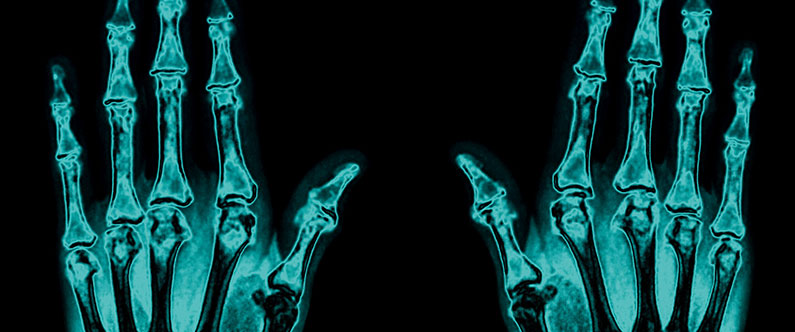Research reveals genetic basis of rheumatoid arthritis in Arabs
 The WCM-Q research is based on samples collected from around 1,600 rheumatoid arthritis sufferers in Qatar, Jordan, KSA, Lebanon and the UAE.
The WCM-Q research is based on samples collected from around 1,600 rheumatoid arthritis sufferers in Qatar, Jordan, KSA, Lebanon and the UAE.
Researchers at WCM-Q have completed a major five-year investigation of the genetic factors underlying susceptibility to rheumatoid arthritis in Arab populations in five different countries.
WCM-Q’s Dr. Thurayya Arayssi, associate professor of medicine/senior associate dean for medical education, led a team of researchers from five centers across the Arab World that collected samples from around 1,600 individuals with rheumatoid arthritis in Qatar, Jordan, the Kingdom of Saudi Arabia, Lebanon and the UAE, plus samples from control subjects. They then worked with researchers at the Broad Institute of MIT and Harvard, one of the world’s foremost genomics research labs, to analyze the genetic data of Arab populations in comparison with European and East Asian populations in relation to susceptibility to rheumatoid arthritis.
The team found that mutations in a gene called HLA-DRB1 are associated with rheumatoid arthritis (RA) risk in Arab populations just as is the case with Europeans and East Asians, suggesting broad similarities in the genetic structure of RA across ethnic groups. However, the study also identified two additional genes that are associated with rheumatoid arthritis in Arabs but are not in Europeans and East Asians.
Dr. Arayssi said: “This research, funded by the Qatar National Research fund, is one of the largest studies ever conducted among Arabic populations with Rheumatoid Arthritis. The results of the study give us new and extremely valuable population-specific insights into the pathophysiology of rheumatoid arthritis, which is extremely encouraging. RA is a very unpleasant disease to live with so any discoveries we can make about it are very valuable and could help future researchers develop new, more effective drug therapies.
Rheumatoid arthritis is a potentially debilitating autoimmune disease characterized by very painful inflammation of the joints, particularly in the hands and feet. RA can also affect larger joints, the skin, lungs, kidneys and the heart and blood vessels, among other parts of the body. The cause of RA is not fully understood and there is currently no cure so treatment is focused on managing the disease.

The study, entitled ‘A multi-national Arab genome-wide association study identifies new genetic associations for Rheumatoid Arthritis’, has now been published in the prestigious medical journal Arthritis & Rheumatology. The study is part of a wider research project entitled ‘Genetic Studies of Rheumatoid Arthritis in some Arab States’ that was made possible by NPRP grant 4-344-3-105 from the Qatar National Research Fund, a member of Qatar Foundation.
Dr. Richa Saxena of the Broad Institute said: “Arab populations are diverse, and as in other populations, family history is an important risk factor for rheumatoid arthritis in Arabs. Before this study, little was known about the specific genetic factors underlying RA risk in this ethnic group.
“As expected, we found that dozens of genes already known for RA from European and Asian populations also play an important role in Arabs. Surprisingly, we also found two new genetic factors that increase risk of RA in Arabs only but do not influence risk in these other populations. Biological and clinical follow-up studies on known and new genes will improve understanding of the causes of RA, and allow for better risk assessment in Arabs and opportunities to develop new RA therapies.”
Dr. Khaled Machaca, associate dean for research at WCM-Q, said: “This multicenter and multination regional study, which included international collaborations, illustrates the power of global collaborative science and the impact it can have on a better understanding of diseases in Qatar and the region. It further illustrates the impact that funding from Qatar National Research Fund can have on promoting collaborative science to the benefit of Qatar and the region.”